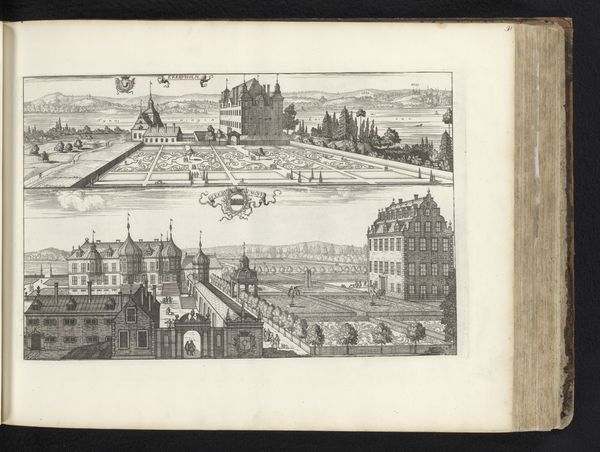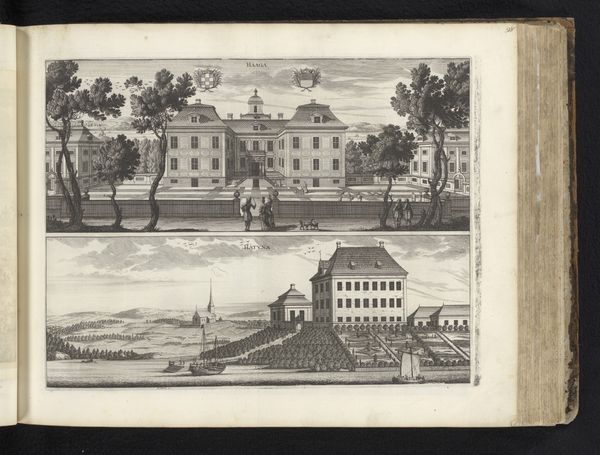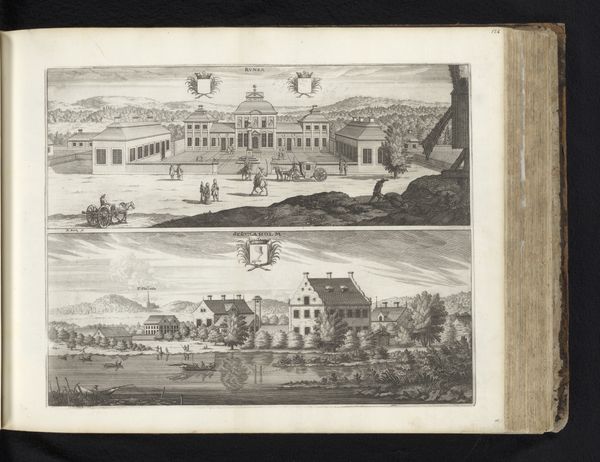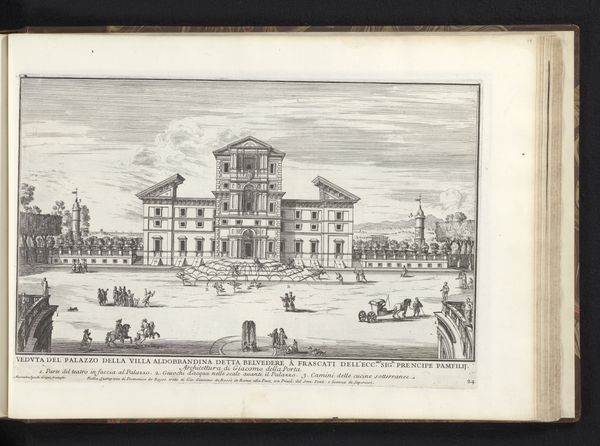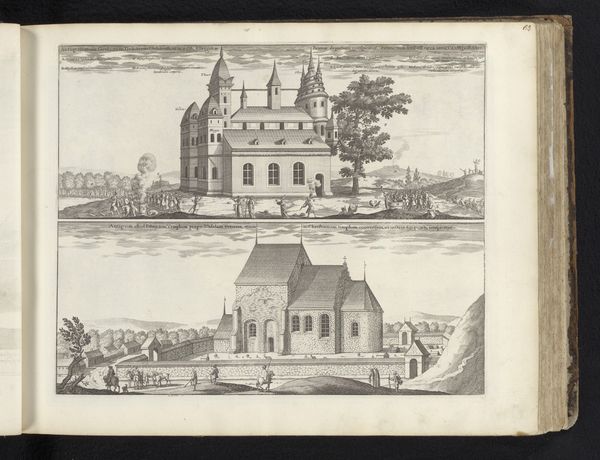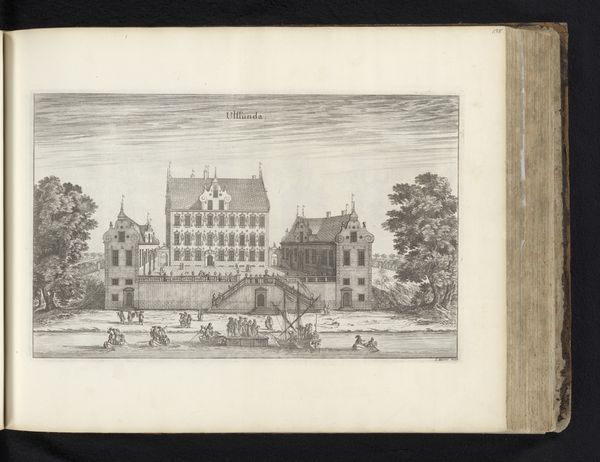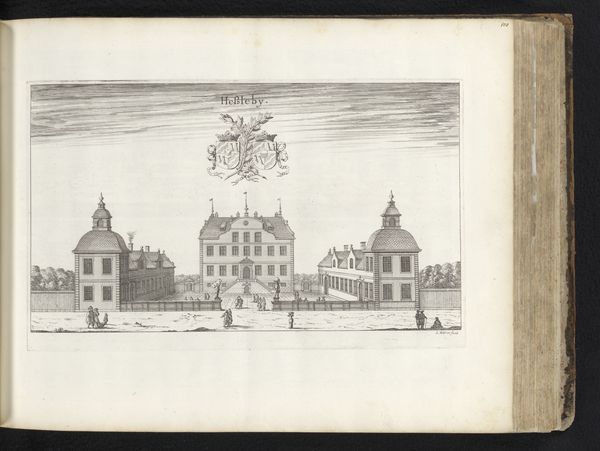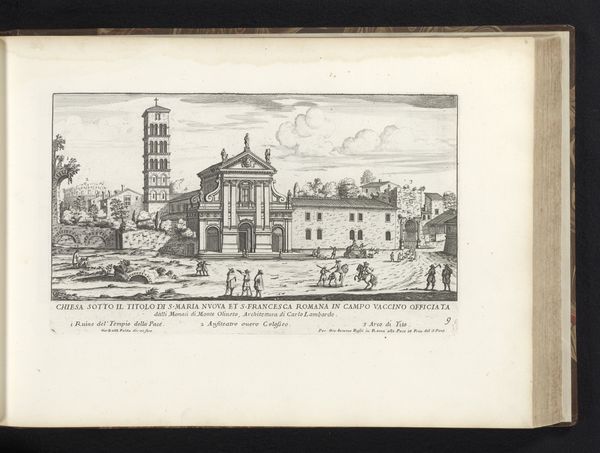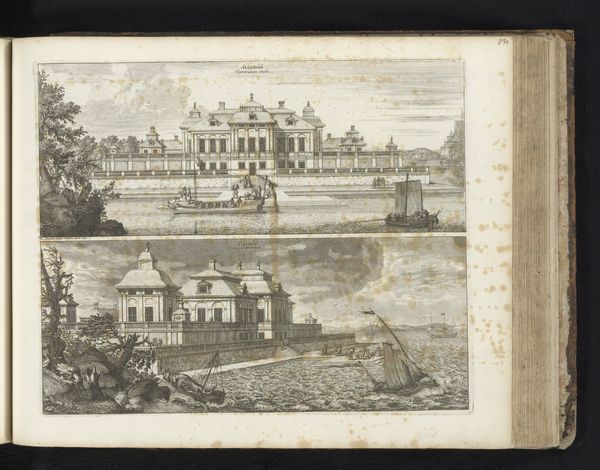
drawing, print, etching, engraving
#
drawing
#
aged paper
#
baroque
#
mechanical pen drawing
# print
#
etching
#
old engraving style
#
sketch book
#
landscape
#
personal sketchbook
#
pen-ink sketch
#
pen and pencil
#
pen work
#
sketchbook drawing
#
cityscape
#
sketchbook art
#
engraving
Dimensions: height 271 mm, width 344 mm
Copyright: Rijks Museum: Open Domain
Curator: Jean Marot’s "Gezicht op landhuis Görväln en landhuis Grönsö," dating back to 1670, offers us a fascinating double view of these estates, captured through meticulous engraving. Editor: Immediately, I’m struck by the contrast. One estate appears almost fortress-like, commanding, while the other is more stately, surrounded by water—the ship in the foreground speaks volumes about connection and trade. Curator: Absolutely. And considering the period, these engravings, as both drawings and prints, were powerful tools for visualizing wealth and status. Note how Marot renders them; it's not just documentation, but a presentation of power. It reflects a specific social and economic hierarchy. Who these places were made for. Editor: The precision is incredible. I wonder about the labor involved in creating these plates. Think of the engravers, carefully translating architectural vision onto copper, replicating for distribution. The uniformity suggests a well-organized workshop system. Curator: Precisely, and that replication also extends and solidifies the landed gentry’s social standing. Beyond just architectural drawings, it represents their influence. Distributing this image would communicate not only the look of the house but of what one family owns. Editor: It really bridges the gap between art and craft. The utility of depicting real spaces, like these estates, for the benefit of owners and admirers versus a subjective rendering. It reveals the values and aesthetics valued within 17th-century aristocratic circles. Curator: That blend also hints at how nascent capitalism sought validation. Through their grand estates they also secured visual space that reflected both political power and their influence. They became landmarks. Editor: It also brings questions surrounding patronage. This was a commission and a display of craftmanship. Someone was paying for this service and to portray them in good light to reinforce a certain narrative. The use of drawing techniques shows the artist as subservient, like a technical medium. Curator: Reflecting on this piece, I am struck by the social layers embedded within these lines, beyond the beautiful renderings of landscape. Editor: I’m equally compelled by how these landscapes have literally been impressed into existence—through process, labour and intentional production—a very physical reminder of their legacy.
Comments
No comments
Be the first to comment and join the conversation on the ultimate creative platform.


